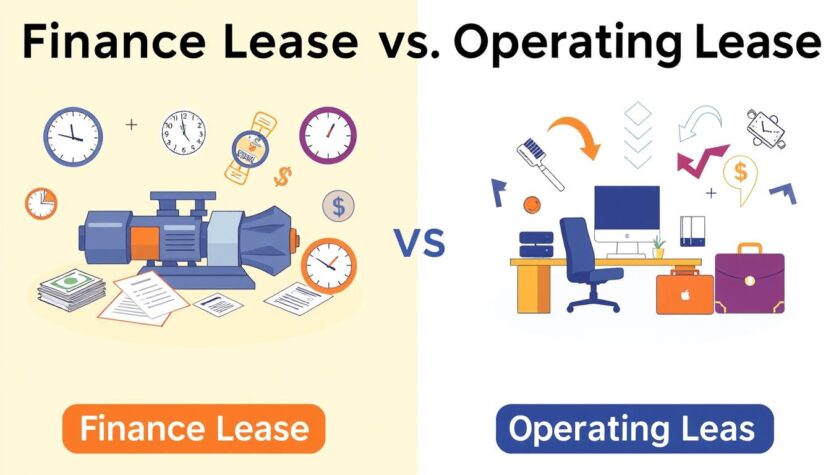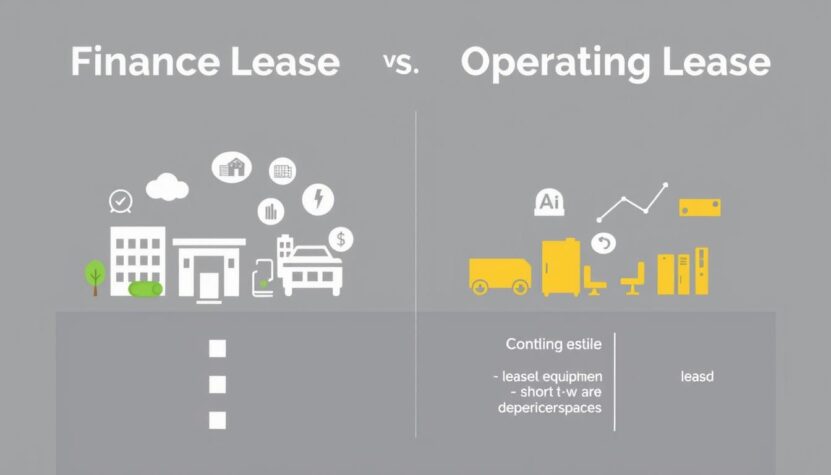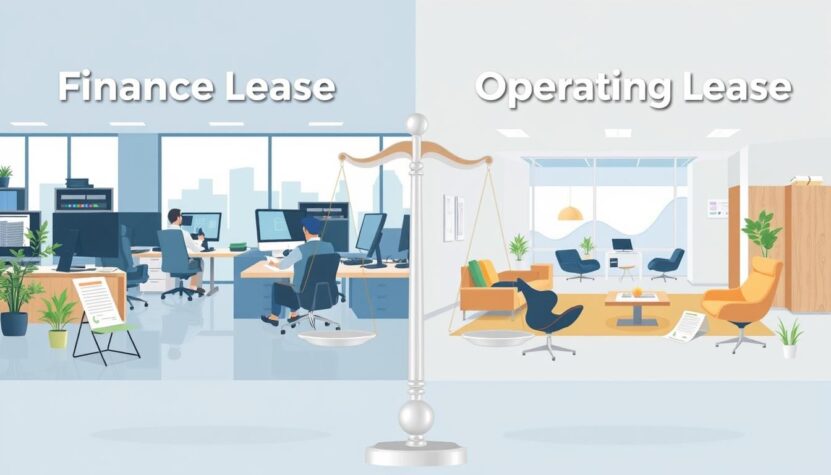The landscape of asset leasing has evolved significantly, and understanding the nuances between finance leases and operating leases has never been more crucial for business owners looking to optimize their financial strategies. With the implementation of ASC 842, adopted by the Financial Accounting Standards Board (FASB), all lease agreements now require recording on balance sheets, fundamentally altering how businesses manage lease accounting. This development has transformed the way you can perceive your lease options for business assets, impacting everything from cash flow to tax implications.
In essence, a finance lease, often referred to as a capital lease, transfers ownership rights or the significant risks and rewards associated with an asset to the lessee. This type of lease can lead to unique financial advantages, particularly relating to depreciation and tax benefits, as assets and liabilities are recorded on your balance sheet. On the other hand, an operating lease affords you the ability to use an asset without the burden of ownership, often ideal for those seeking flexibility with lower upfront costs.
In this article, we will explore the fundamental differences between finance and operating leases, focusing on their implications under the new lease accounting standards. By delving into personal stories and compelling examples, we will help you determine which leasing option aligns best with the specific needs of your business, ultimately guiding you towards making a more informed decision.
Understanding the Basics of Leases
Leasing has become an essential financial tool for businesses looking to manage their assets efficiently. Understanding the core differences between finance leases and operating leases is crucial for making informed decisions. Each type offers distinct advantages and implications, especially concerning finance lease tax implications and operating lease benefits.
What is a Finance Lease?
A finance lease is essentially a long-term agreement in which the lessee effectively finances the acquisition of an asset. Ownership rights may transfer to the lessee at the end of the lease term, contingent upon meeting specific criteria defined by ASC 842. This type of lease typically allows lessees to account for lease payments as capital expenses, which can lead to potential finance lease tax implications. Characteristics of a finance lease include:
- Ownership transfer is possible at the end of the lease.
- Term duration is equal to or exceeds 75% of the asset’s estimated useful life.
- Significant present value of lease payments relative to the asset’s fair value.
What is an Operating Lease?
In contrast, an operating lease allows companies to rent assets without transferring ownership. This provides flexibility for businesses looking to upgrade assets regularly, thus reducing the risk of obsolescence. The terms for operating leases are generally less than 75% of the asset’s estimated economic life. Payments made under operating leases are recognized as operating expenses, which can be tax-deductible, highlighting the operating lease benefits. Key features of an operating lease include:
- Ownership retained by the lessor during and after the lease term.
- Lease terms typically shorter than 12 months may be expensed using a straight-line method.
- Recorded as a right-of-use (ROU) asset and liability on balance sheets due to ASC 842 requirements.
| Characteristic | Finance Lease | Operating Lease |
|---|---|---|
| Ownership Transfer | Possible at end | Retained by lessor |
| Lease Term | ≥ 75% of asset’s life | |
| Accounting Treatment | Capitalized as asset | Expensed as operational |
| Tax Implications | Potential benefits | Deductible expenses |
| Balance Sheet Impact | Included as asset/liability | Included as asset/liability |
Finance Lease vs Operating Lease – Key Differences
Understanding the differences between finance and operating leases is crucial for making informed leasing decisions. The implementation of ASC 842 significantly changed how these leases are recorded, impacting your financial statements. A careful lease comparison will help clarify the accounting treatment and ownership implications for each lease type.
Accounting Treatment Under ASC 842
Under ASC 842, both finance and operating leases appear on the balance sheet. This standard shifts previous practices to ensure greater transparency in reporting. However, the expense recognition differs markedly between the two types:
- Finance leases are categorized as right-of-use assets, amortized over the asset’s useful life, reflecting higher initial expenses that gradually decrease.
- Operating leases, while also recognized as right-of-use assets, result in straight-line expense recognition, maintaining consistent expense levels throughout the lease term.
Lease Term and Ownership Rights
The lease term and ownership rights differ significantly in finance and operating leases. Finance leases are generally long-term agreements that cover a substantial portion of the asset’s economic life. This type of lease often includes a bargain purchase option, allowing for ownership of the asset at a nominal cost at the end of the term.
| Aspect | Finance Lease | Operating Lease |
|---|---|---|
| Term Length | Long-term, often correlating with the asset’s useful life | Short-term, covering a fraction of economic life |
| Ownership | Potential ownership post-lease | No ownership; assets must be returned |
| Balance Sheet Treatment | Recorded as both an asset and liability | Operating expenses with no asset or liability |
| Expense Recognition | Higher initial expenses tapering off | Consistent periodic expenses |

Evaluating Lease Options for Your Business
When evaluating lease options, understanding the financial implications of each lease type is crucial. The choice between a finance lease and an operating lease can significantly impact your business’s financial strategy, cash flow, and overall operational flexibility.
Financial Implications of Each Lease Type
Finance leases essentially function as financed purchases, with the lessee gaining ownership of the asset at the end of the lease term. This type of lease allows you to capitalize the asset and recognize lease liability on your balance sheet. Consequently, you can benefit from depreciation and interest deductions, which may reduce taxable income.
On the other hand, operating leases resemble traditional rental agreements. With these leases, payments appear as operating expenses on the income statement and do not have the same impact on the balance sheet, providing off-balance sheet treatment. Operating leases typically require minimal initial investment, making them attractive for businesses that prefer to conserve capital or avoid long-term commitments.
Choosing a Lease for Your Business Needs
Choosing a lease for your business needs often revolves around how each type aligns with your strategic objectives. Finance leases are ideal for businesses looking for control and customization of their assets, reflecting long-term commitments. These leases might be suitable for equipment that is integral to your operations.
Operating leases offer the flexibility essential for businesses with fluctuating needs or those impacted by rapid technological advances. They facilitate easy upgrades or changes in equipment, allowing you to adapt to evolving market conditions without committing to long-term assets.
Consider consulting an outsourced accounting service to analyze the potential financial impact of different lease options. Making an informed choice can significantly enhance your business strategy while optimizing financial performance.

Conclusion
In conclusion, navigating the complexities of finance lease vs operating lease is essential for making informed leasing decisions for your business. Understanding the fundamental characteristics of each lease type, including their accounting treatment and financial implications, enables you to choose the most suitable option aligned with your unique business needs. Financial leases are favored for long-term funding needs, whereas operating leases serve well for short-term asset acquisition.
Moreover, the implications of accounting standards like ASC 842 have made it crucial to recognize both types of leases on balance sheets, significantly affecting financial metrics and strategic planning. By being well-versed in these business leasing options, you can better assess how each lease structure impacts your organization and ultimately drive sound decision-making.
Ultimately, whether you opt for a finance lease, assuming risks and rewards linked to asset ownership, or an operating lease, whereby the lessor retains most of those responsibilities, ensures you have the necessary insights to select wisely. Keep these considerations in mind as you evaluate potential leasing strategies tailored to elevate your company’s operations in today’s dynamic economic landscape.
Related Posts:
- What Is WIP in Accounting and How It Impacts Your…
- Acquisition Cost Meaning - How to Calculate and Use…
- How to Calculate Marginal Benefit - A Guide for…
- How to Sell a Small Business by Owner? The Complete…
- What Are Royalties in Business? A Complete Guide for…
- Is Your Content Written by a Robot? Spotting…









